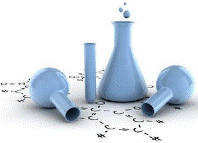Chemical and Biomolecular Engineering, Department of

Department of Chemical and Biomolecular Engineering: Faculty Publications
Date of this Version
2015
Document Type
Article
Citation
RSC Adv. 2015 ; 5(99): 80956–80966. doi:10.1039/C5RA15208A.
Abstract
Liver fibrosis occurs as a consequence of chronic injuries from viral infections, metabolic disorders, and alcohol abuse. Fibrotic liver microenvironment (LME) is characterized by excessive deposition and aberrant turnover of extracellular matrix proteins, which leads to increased tissue stiffness. Liver stiffness acts as a vital cue in the regulation of hepatic responses in both healthy and diseased states; however, the effect of varying stiffness on liver cells is not well understood. There is a critical need to engineer in vitro models that mimic the liver stiffness corresponding to various stages of disease progression in order to elucidate the role of individual cellular responses. Here we employed polydimethyl siloxane (PDMS) based substrates with tunable mechanical properties to investigate the effect of substrate stiffness on the behavior of primary rat hepatocytes. To recreate physiologically relevant stiffness, we designed soft substrates (2 kPa) to represent the healthy liver and stiff substrates (55 kPa) to represent the diseased liver. Tissue culture plate surface (TCPS) served as the control substrate. We observed that hepatocytes cultured on soft substrates displayed a more differentiated and functional phenotype for a longer duration as compared to stiff substrates and TCPS. We demonstrated that hepatocytes on soft substrates exhibited higher urea and albumin synthesis. Cytochrome P450 (CYP) activity, another critical marker of hepatocytes, displayed a strong dependence on substrate stiffness, wherein hepatocytes on soft substrates retained 2.7 fold higher CYP activity on day 7 in culture, as compared to TCPS. We further observed that an increase in stiffness induced downregulation of key drug transporter genes (NTCP, UGT1A1, and GSTM-2). In addition, we observed that the epithelial cell phenotype was better maintained on soft substrates as indicated by higher expression of hepatocyte nuclear factor 4α, cytokeratin 18, and connexin 32. These results indicate that the substrate stiffness plays a significant role in modulating hepatocyte behavior. Our PDMS based liver model can be utilized to investigate the signaling pathways mediating the hepatocyte-LME communication to understand the progression of liver diseases.

